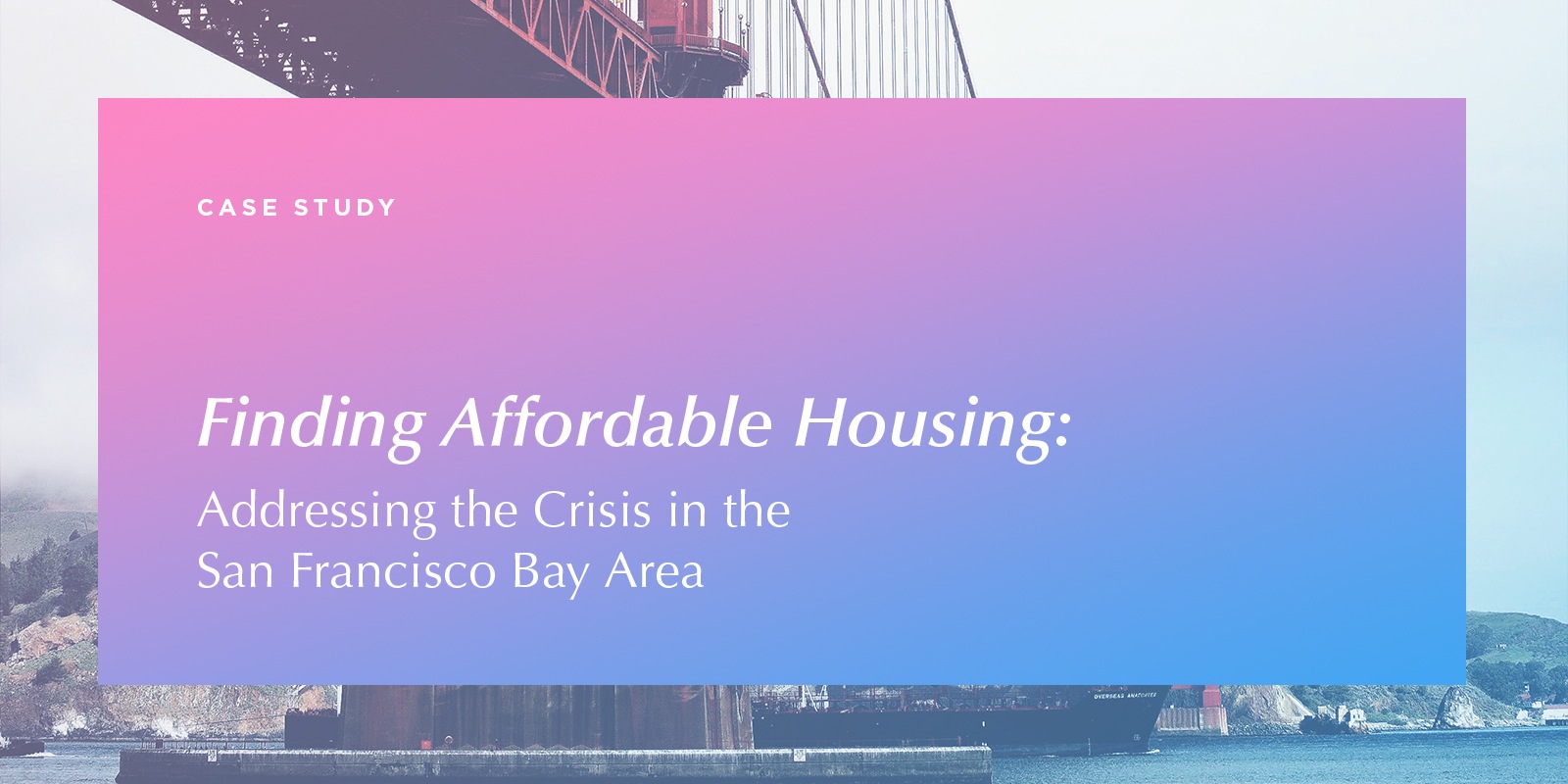
No one could have expected the changes the explosive growth of technology in the Bay Area would have on the housing market and the economic and social impacts caused by the influx of young entrepreneurs and young technology companies.
But the tech companies are not the only contributing factor to the gentrification and subsequent rise in unaffordable housing in San Francisco. Rent control, the construction permit process, government building approvals and miscommunication between economic groups all have contributed heavily to the crisis that can be seen in the Bay Area today.
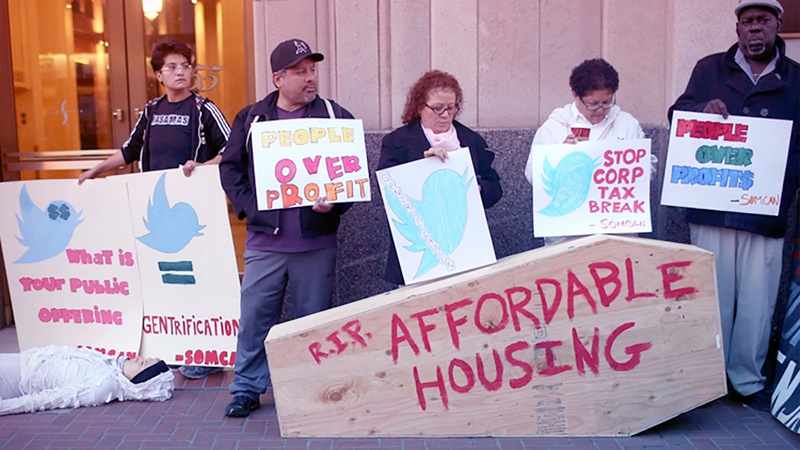
The Problem
The lack of affordable housing in the San Francisco Bay Area is a problem for both the lower middle & working classes.The problem is non-binary in
The reality is that in the short term the housing problem is not going to get better.
It is imperative, both for the sake of those moving to the area for the first time and those that are being displaced from their homes because of gentrification, that a way to find affordable housing amongst the housing that already exists is developed.
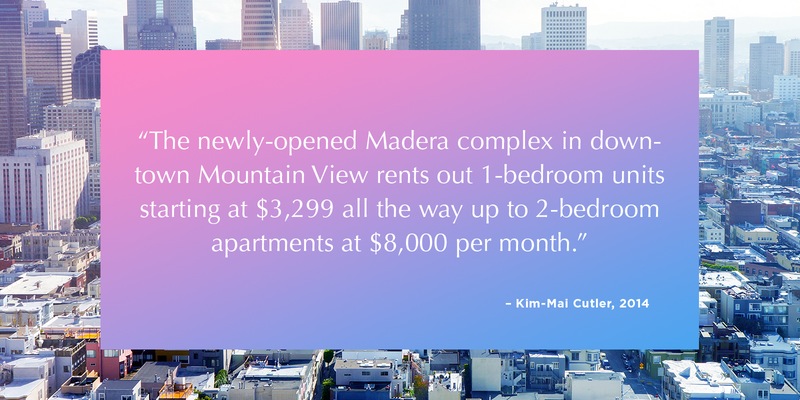
New construction is important, but when it only creates luxury housing the gap in affordable housing is widened rather than closed.
Without a way to research available housing within a price range based on an individual’s income finding a place to live becomes very difficult. In the San Francisco area one bedroom apartments can go for up to $3,300 per month in some areas, and can go all the way up to $8,000 for some two bedroom places. (Cutler)
While for some middle and upper-middle class workers might be able to afford the exorbitant rent prices, families, service workers and some entrepreneurs often will not be able to afford the cost of having their own place or living where they lived before as prices rise.
### The Project
An accessible way to locate affordable housing for residents and
A proposal for a potential platform that could fill this role is an application service that seeks to assist renters in finding appropriate housing. The service would provide traditional rental-finding options, such as finding rentals by cost, number of bedrooms, etc, but it would also include options such as connecting with potential living partners, finding places by commute distance, rent control, neighborhood, and a variety of other options to help renters find the right home.
While a mobile application seems ideal at first glance, it potentially would have a chance of alienating users, specifically those with less technological know-how or lack of access to a smartphone. A
There are a few options to be investigated for the foundation of the project. A government partnership would make it easier to service the working class and provide more widespread access to printed materials for distribution. A private approach would allow for more freedom in how the service is run, and make changes to the platform quicker and easier.
The primary goal of the project is to provide a service for users to find housing that matches what they can afford to pay without costing the potential renter to use the service. A cost to use the service is a barrier to entry that could possibly make the service unable to do it’s job properly.
### Research Process
There will be a multifaceted research approach to the project. Research methods will include analyzing existing data (such as population, housing capacity, average salaries of different groups, etc), plotting zones based on housing costs, original questionnaire & interview based research
Quantitative Research:
For the quantitative portion of the research there is a vast amount of data that would be useful for the project. A lot of this data already exists, but it would need to be accessed and indexed. Some of the data that would be used would be census data, information on average salaries, city zoning maps, a database of approved construction projects, information on local jobs versus people moving to the city for jobs, etc. Survey data may also be collected by conducting surveys of different social and economic groups.
This data can be combined to learn about the types of people looking for housing, and cross referencing housing data with employment and census data profiles can be built to help predict the types of places people might be interested in. This is done in a similar way to the way digital advertising profiles are created. By building comprehensive profiles it is possible to suggest places that people may not realize they are interested in.
Qualitative Research:
In order to fully understand the situation beyond the data a quantitative component will be central to research and data collection. Members of various groups (social workers, tech workers, etc) will be interviewed about their experience in finding homes and the problems that they face with their homes and neighborhoods. The goal of this research is to identify some of the main pain points that exist in housing beyond just cost. It is easy to identify trends and make conclusions based off of quantitative data, but this research data may shed light on some of the less obvious problems that need to be addressed.
Interviewees will be selected from groups identified as common in the San Francisco and Bay Area from criteria such as neighborhood, economic wealth, commuters vs non-commuters and natives to the area vs those that moved for a job. These groupings can help identify trends based on shared characteristics between groups, which may help identify some desirable traits and help address pain points for each group.
Each interviewee will be selected proportionally to the population of a specific group in the area. (For example, if there are 200,000 commuters around the San Francisco area then a sample size of 100 or 200 may be selected, where if there are 6,000 people in the highest class of economic wealth than 3 or 6 would be interviewed.) This approach will help serve to accurately represent the views of the whole rather than skew results towards a specific group.
Case studies will also be employed to grasp how a specific type of person may go about finding housing. The needs and desired experience of a high school grad looking to break into the music industry may be drastically different than, someone working in the tech sector or a service worker that works at the local farmer’s market.
Historical research will be conducted to attempt to classify and understand the diverse groupings of people in the area. Then fictional journeys will be created to walk through the process different people might go through when looking for housing.
Participatory Research:
We will partner with community leaders to review the research being conducted to verify that the results are in line with those observed within the communities. By tapping into the experience of leaders in the community a greater understanding of the data may be reached in order to arrive at a better solution.
### Existing Services
Lovely:
Lovely is a online service designed around finding rental listings in large cities like New York & San Francisco. It provides search options such as price, number of bedrooms, pets allowed and if photos are included in the listing.
> “Apartment hunting can be difficult and time-consuming. We
EasyRoommate:
A service designed to connect people looking to rent rooms with those looking for a place to live. The site allows a user to search by desired rent range, age, sex and room size.
> “Helping you find a roommate.” — http://ca.easyroommate.com/
From the services evaluated in my research I could not find any that went beyond simply being a tool to help people search for places to rent. None of them seemed to employ data on the area or attempted to understand the user beyond a few input fields.
## Research
### The Problem, Expanded
Beyond a simple lack of housing there are many other factors involved the formation of this crisis. Cutler expands on this in her article deconstructing the problems surrounding the housing market in the Bay Area. “Homeowners have a strong economic incentive to restrict supply because it supports price appreciation of their own homes.” She discusses how the high cost of real estate in the area encourages home and landowners to fight against new developments because they want the value of their investments to stay high. This is problematic when combined with some of the other construction policies in the area.
### Construction Policies
The city has an difficult construction permitting process in which the companies looking to build must jump through many hurdles to even have their buildings considered. (Find more information from the San Francisco Planning Department.) The process is notoriously easy for neighbors or townspeople to interfere with (sometimes for things even as small as not liking the shade of paint that the building is to be.)
The areas that new construction projects are allowed also severely limit where housing can be built. The figure to the below shows a map of the build height ordinances in San Francisco. Anything yellow means that no building over four stories can be built in that area. While this does well to preserve the look of the city it limits the building of housing complexes that could help alleviate some of the problems with high rent.
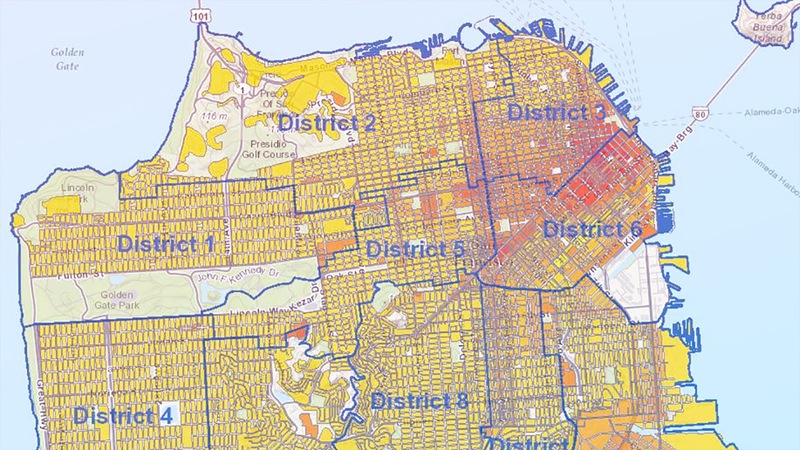
Simply constructing more places to live, however, also is not an instant solution to the problems. San Francisco professor Calvin Welch argues that we can’t “build our way to affordability” in his 2013 paper. “Those policies and programs which seek to insulate residents from the wild swings of a market that is dominated by a few owners able to exert powerful market control that repeals the “law” of supply and demand and speculators who take advantage of “the market,” actually offer the best chance of affordable housing for the overwhelming majority of San Franciscans.” (Welch)
Welch’s argument focuses on how newly constructed housing units are marketed as luxury condos, only providing more housing for the upper-middle class and above. Cuttler notes this as well: “…affordable housing advocates say that developers should be required to have a higher percentage of below-market-rate units built.” Until a way is found to incentivise companies to balance out newer luxury developments with affordable housing ones then construction will not be a viable answer to the problem.
Influx of New Workers
Due to the tech industry in Silicon Valley and general perceived desirability of living in the Bay Area a large amount of people move to the area every year. The amount of jobs available and the amount of people moving into the area is inconsistent with the amount of housing available now and in the near future. To give an example of the scale of mismatch between new renters and construction projects: “Mountain View is discussing new office development that would bring as many as 42,550 office workers to the city. But the city’s zoning plan only allows for a maximum of 7,000 new homes by 2030.” (Cutler)
This constant growth of jobs without new construction, and particularly new, affordable housing only serves to increase the severity of the housing crisis.

Conflict Between Parties
A culture of misunderstandings from has been developed from all sides of the Bay Area housing crisis. Often the locals of the San Francisco area are found protesting many of the tech employee’s services in the area. This comes out of the idea that the tech companies are solely responsible for the rising cost of living (including housing.) While this is not completely incorrect, what they are often uninformed about is that those tech companies want the same thing that they
Unfortunately the local governments often are unwilling to cooperate or give permission for construction projects. “The Google Bus protesters have said that the company should build housing on its campus, but the Mountain View city council has explicitly forbidden Google from doing just that.” (Cutler) Perhaps if some of these misunderstandings were cleared up people would be able to focus on the problems that they can help solve instead of protesting issues to companies that want the same thing.
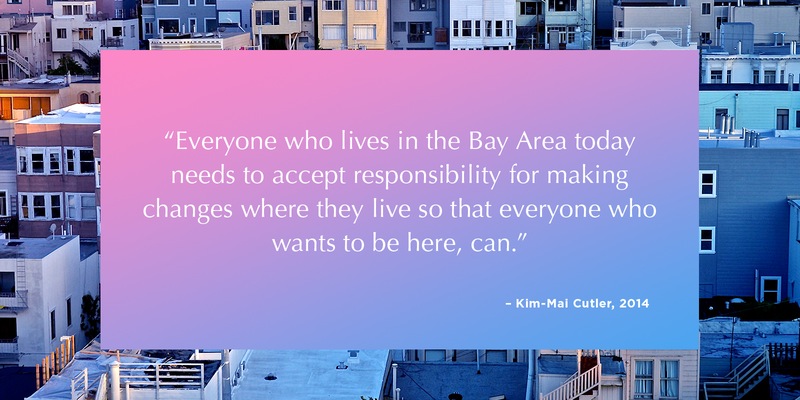
Going Forward
Some of the proposed solutions for the housing crisis are increased development, allowing companies and entrepreneurs to build their own housing complexes and simply for some of these larger companies to move on to greener pastures out of the bay area (which is happening already.) (Kosoff) “[In Menlo Park] Facebook partnered with developer St. Anton Partners to build a 394-unit complex within walking distance of its Menlo Park headquarters. But that’s 394 units for a company with more than 6,000 employees.” (Cuttler) As can be seen, while some tech companies are trying to take steps to provide housing for their employees to offset the influx of people, it is difficult to keep up with demand, especially with rigid construction rules and unhelpful constituents.
Potential solutions are being explored constantly to alleviate the problem of housing costs in the area, and progress is being made slowly. “Mayor Ed Lee and others are trying to speed [construction] up, by giving affordable housing projects first priority in the planning department’s approval process, followed by market rate projects with a higher inclusionary percentage of below-market-rate housing.” (Cutler)
There still is a long way to go to repair much of the damage done by the excessive cost of housing in the San Francisco area.
Photography
Unsplash, unless otherwise stated.
Primary Source
Cutler, Kim-Mai. “How Burrowing Owls Lead To Vomiting Anarchists (Or SF’s Housing Crisis Explained).” TechCrunch. AOL Inc., 14 Apr. 2014. Web. 24 Feb. 2016.



